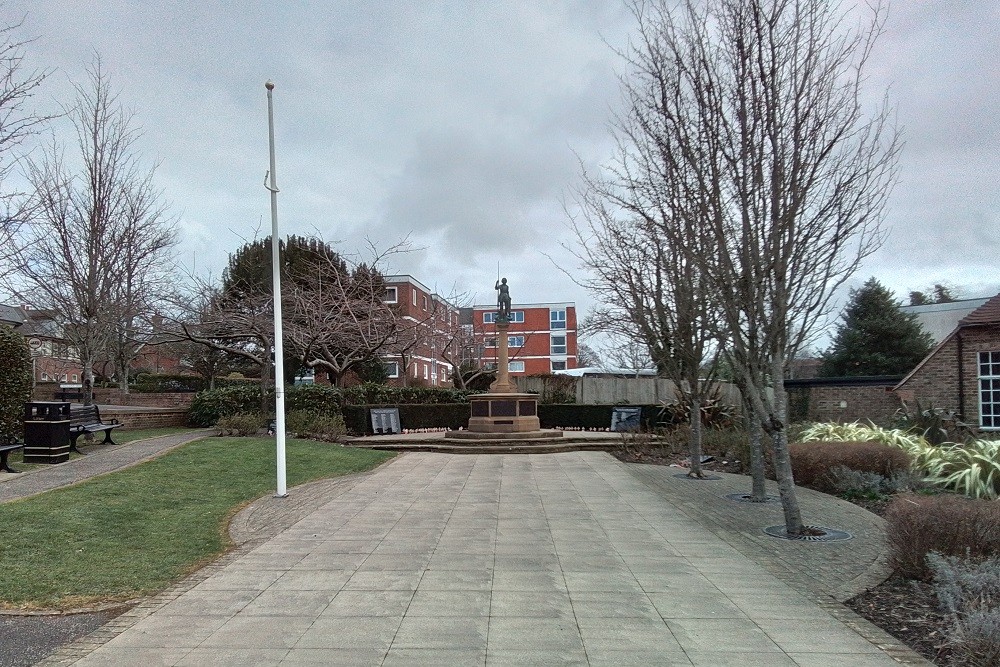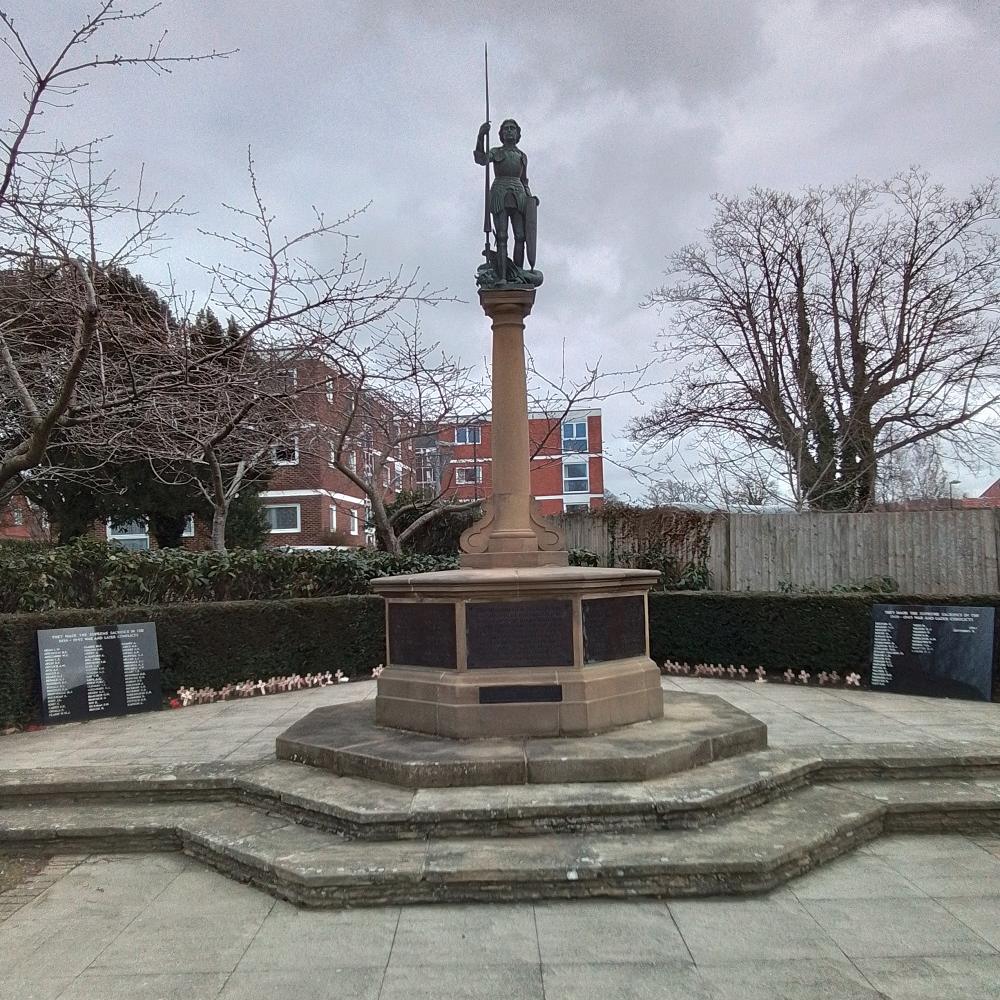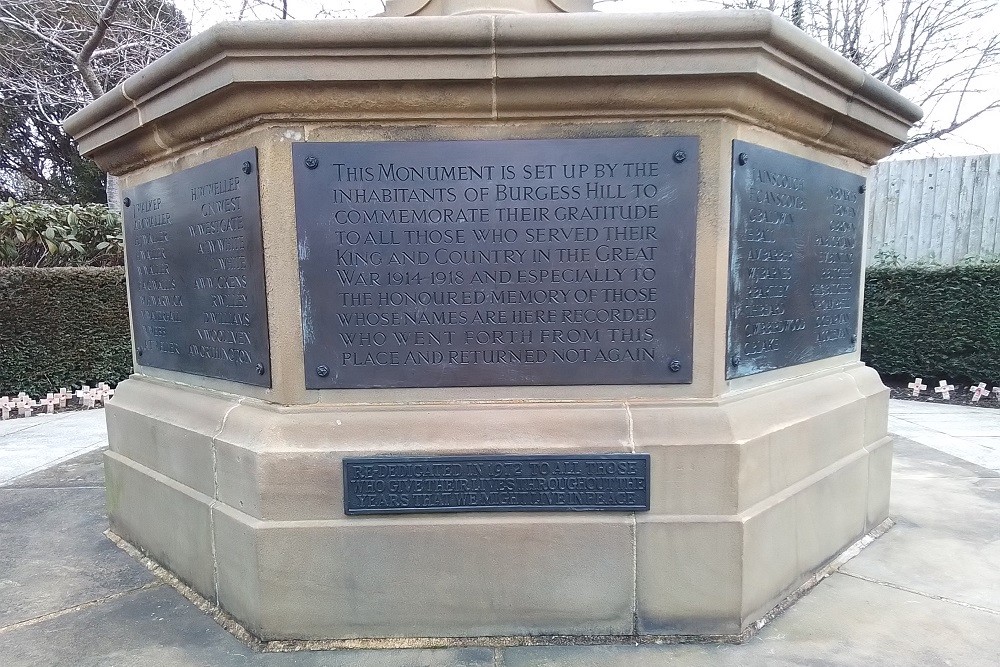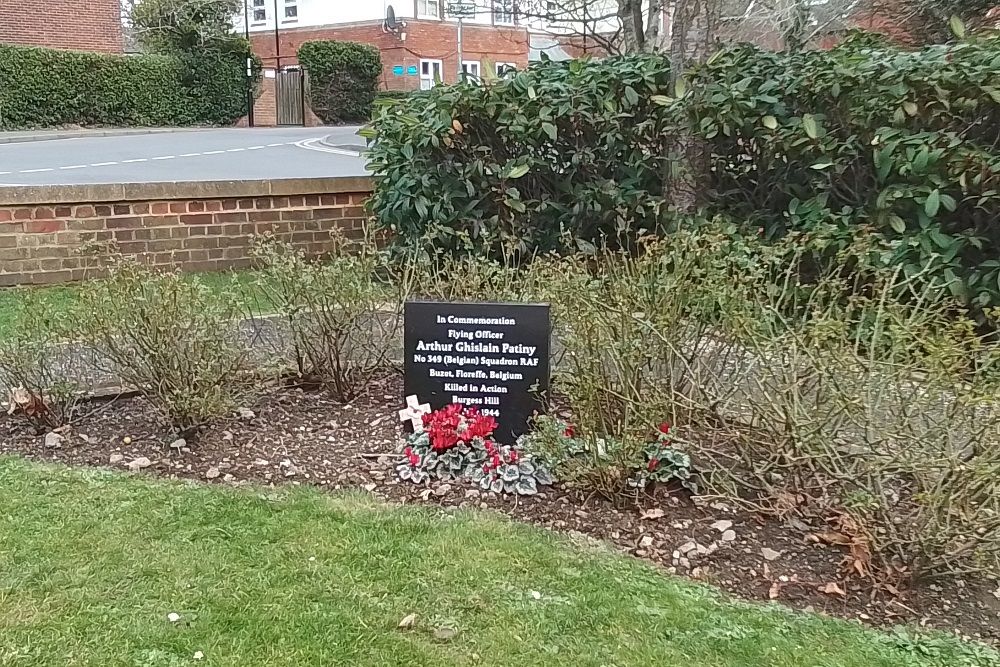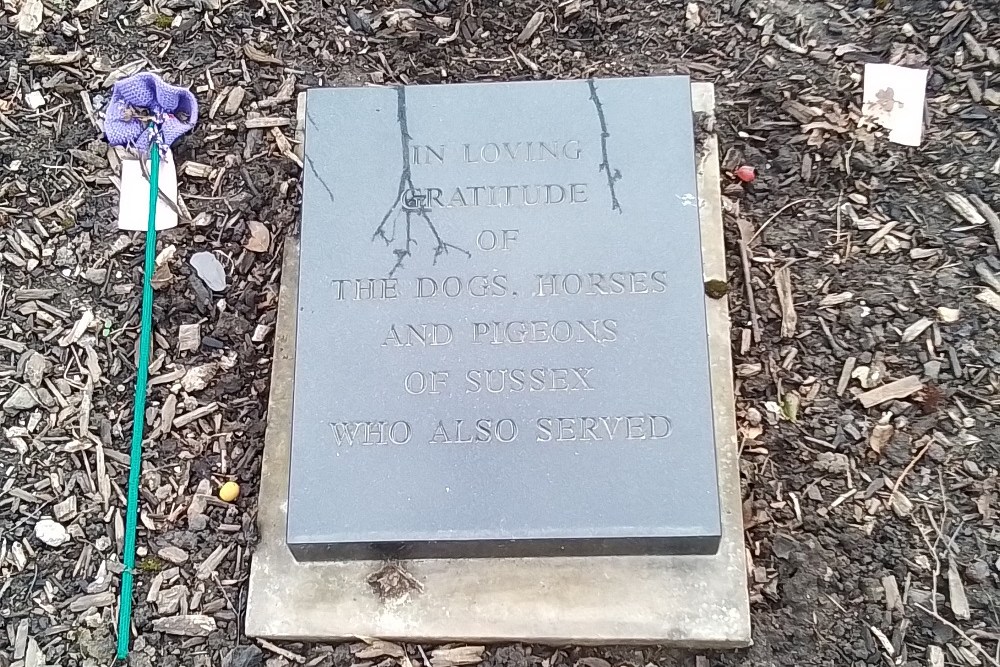Garden of Remembrance Burgess Hill
Burgess Hill war memorial is situated in the garden of remembrance, in the town centre, just opposite the Church of St John the Evangelist.
The stone base of a bronze allegorical statue of St. George displays the 145 names of those lost in WW1 and a dedication to them. These panels were originally inscribed in black lettering, but have since been replaced with bronze plaques.
The dedication reads:
"This monument is set up by the inhabitants of Burgess Hill to commemorate their gratitude to all those who served their King and Country in the Great War, 1914-1918, and especially to the honoured memory of those whose names are here recorded, who went forth from this place and returned not again."
Below, is a more inclusive dedication, reading:
"Re-dedicated in 1972 to all those who gave their lives throughout the years that we might live in peace."
The memorial unveiled on 11th November 1923 by Colonel C H M Hitchens and was dedicated on the same Armistace Day by Reverend F G Beddard. It was rededicated in 1972.
This statue and the garden itself were designed by Walter Tower, while Norman and Burt constructed all but the St. George figure atop the pillar, who was sculpted by William Gough.
Behind and to the side of the bronze figurine, two more memorials stand, in the form of granite slabs. These were erected in 1995 to commemorate those who fell in WW2 and the conflicts since. Currently it names 89 who died in WW2 and 1 in the Faulklands war in 1982.
The dedication heading the stones reads:
"They made the supreme sacrifice in the 1939-1945 and later conflicts."
In total 235 people are commemorated in this garden of remembrance. Of these, two names, which hold particular significance in the history of Britain are Vincent Waterfall, 2nd lieutenant in the Royal Flying Corps and his observer, Charles Bayly. They were shot down over Belgium while on a reconnaissance mission, becoming the first British air crew to be lost in the Great War. They are buried in the Tournai Communal Cemetry Allied Extension, Tournai, Hainaut, Belgium.
In recent years a memorial tablet has been added to the garden to commemorate Arthur Ghislain-Patiny, a Belgian man, who came over to Britain at the age of 24 to aid us in our efforts in WW2, by joining the RAF. Unfortunately, his spitfire crashed in Greenlands field, Burgess Hill, while involved in a friendly dog-fight. His body was repatriated and is buried in a cemetery in Buzet, Floreffe, Belgium.
There is also a slab to the memory of the animals who fought alongside man.
The dedication reads:
"In loving gratitude of the dogs, horses and pigeons of Sussex who also served."
Do you have more information about this location? Inform us!
Source
- Text: Claire
- Photos: Claire
Nearby
Museum
Point of interest
Monument
- War Memorial Wivelsfield - Wivelsfield
- War Memorial St. Peter and St. John the Baptist Church - Wivelsfield
- War Memorial Wivelsfield Green - Wivelsfield Green
Cemetery
- Commonwealth War Graves St. John Churchyard - Burgess Hill
- Commonwealth War Graves St. Peter and St. John the Baptist Churchyard - Wivelsfield
- Commonwealth War Graves St. Cosmas and St. Damian Churchyard - Keymer
